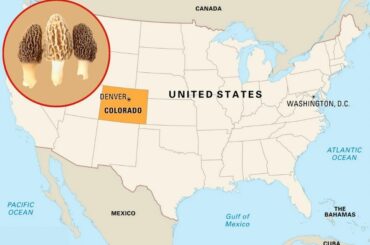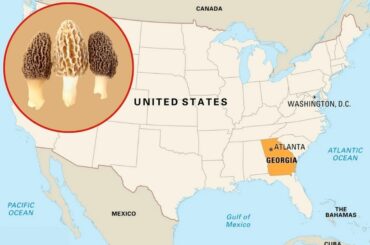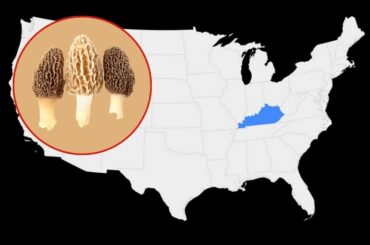Monotub polyfill: What does it mean? This topic seems confusing and complex. But it is not. Let me explain this in a way you can understand. Read this article to the end to learn more about monotub polyfill
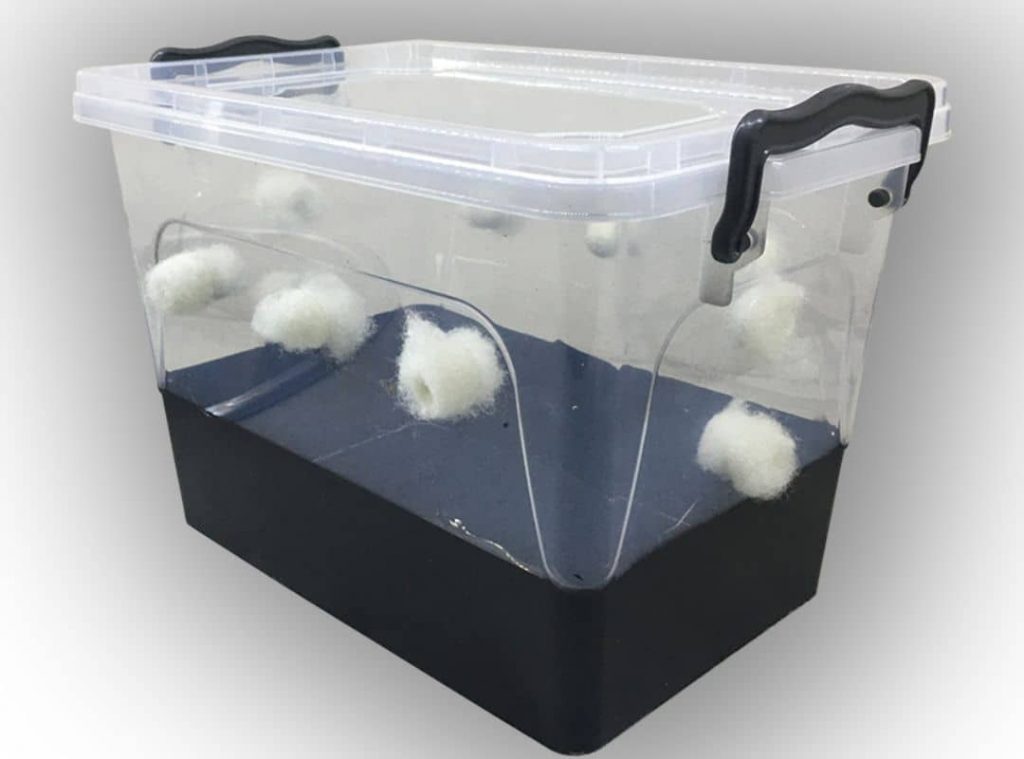
Do you need polyfill in a Monotub?
Contents
Monotub is one of the easiest methods out there to grow mushrooms indoors. It is faster than other methods and does not take up a lot of space. Monotub is pretty much a self-sustaining system and therefore does not need high-tech ventilators, humidity controllers or temperature controllers.
As a result, monotub is a popular choice among beginner mushroom cultivators. The monotub method is mostly used for the cultivation of manure-loving species such as P. Cubensis, Agaricus and Shaggy Mane mushroom. You can use a polyfill layer in monotub holes after the mycelium of your mushroom has fully colonized the substrate. The purpose of using a polyfill to layer the holes is to maintain humidity inside the Monotub.
If you ditch the polyfill layer in the monotub, it is likely that your substrate will dry out quickly. With the use of a Polyfill layer, you can ensure that the substrate retains more moisture and receives enough fresh air exchange inside the Monotub. Polyfill also prevents contamination in the monotub. This provides your mycelium with a perfect environment for fruiting.
What does polyfill mean?
Polyfill is the material used to loosely cover the holes of the monotub in mushroom cultivation after the mycelium is fully grown. This is used to regulate the moisture and fresh air exchange in the substrate.
Therefore the main purpose of the Polyfill is to act as a gas exchange filter. Polyfill should be sterilized in a pressure cooker before use. Polyfill is mostly used in monotub methods to retain the moisture in the substrate. You can simply use cotton as your polyfill to stuff the holes in the monotub. Otherwise, you can buy pre-cut polyfill filter disks that fit in your monotub holes. These are available on online sites where mushroom grow kits are sold.
These precut polyfill disks are made out of durable plastic rings and adhesive back. These disks can give you the perfect flow rate and density to allow the right amount of air exchange for monotubs or in any style mushroom grow kits. They keep humidity in and allow high levels of air exchange. You can simply peel off the disks and stick them over the holes of your monotub. The great thing about these precut monotub polyfill disks is that you can reuse the disks over and over, sterilizing them in between the cultivations using 3% peroxide.
How do you stuff polyfill in a Monotub?
Things you need:
- Plastic tub
- Pressure cooker
- Polyfill material (Cotton wool or pre-cut store-bought polyfill filters)
- 70% Isopropyl alcohol
- 1/4 inch drill bit and an electric Drill (You can also use a hammer and nail or a paper cutter for this purpose)
- Glass jar
- Tin foil
- Latex gloves
- Surgical mask
- Tape
Preparing the monotub
Take out the lid and drill holes using a 1/8 drill bit in the plastic tub, you have to drill 4-6 holes near the rim of the lids evenly spaced out. Drill another row of holes near the substrate level in the same manner. Wipe the insides and outside of the tub with70% alcohol to sterilize the tub before stuffing the polyfill. Make sure to maintain your personal hygiene while you perform the task. You should wear a surgical mask and latex gloves at all times to prevent contamination
Sterilizing the polyfill
Put your polyfill material in a heat-tolerant glass jar and cover it with tin foil. The tin foil will keep any moisture from entering the jar while sterilizing. Place the jar inside the pressure cooker and turn up the heat. You may have to maintain the boiling temperature for at least 60 minutes. Once done, let the jar with the polyfill cool down overnight or for 8 hours.
Stuffing the polyfill into the monotub
After your monotub is finished with the drilling and sterilizing, you can fill the pre-prepared bulk substrate into the tub. At this time the bulk substrate should be already spawned. Before this, you need to tape the holes to prevent contamination and fresh air exchange. Once the mycelium has fully colonized the substrate, the tape should be removed from the holes in the tub and should be filled with the sterilized polyfill material.
The polyfill should be packed lightly in the holes closer to the substrate and the holes near the lid should be tightly packed with the polyfill. This is done to ensure the ideal levels of fresh air exchange. Too much fresh air exchange in the monotub could dry out the substrate and affect the growth of mushrooms. If you are using cotton as your polyfill, make sure to tape the sides of the holes to prevent the cotton from loosening up from the holes. You can use the store-bought polyfill filter disks in lieu of the cotton. These polyfill disks stick onto the holes and can be reused many times.
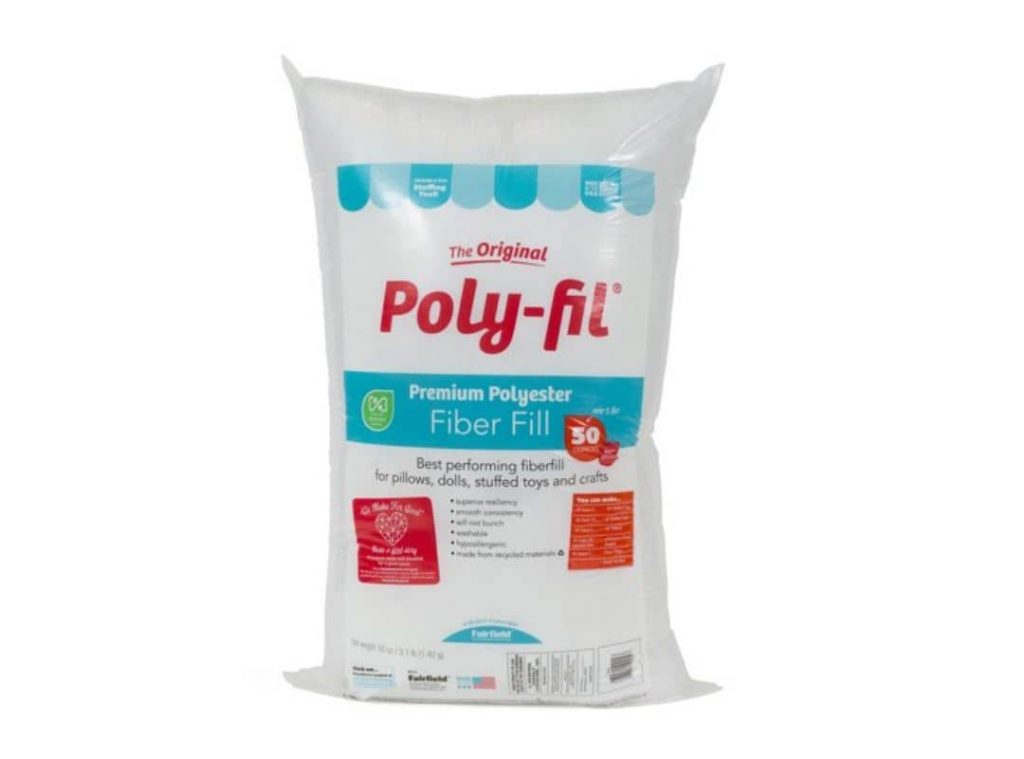
Monotub polyfill alternative
One of the most popular alternatives to polyfill is Tyvek. Tyvek is a trademarked material made of 100% high-density polyethylene fibers that are randomly laid and compressed. But it still is breathable and lets water vapor and gasses go through, making it ideal to cover the holes in a monotub.
Some people claim to use 3M micropore surgical tapes instead of polyfill to cover the monotub holes as well. Micropore surgical tapes are gentle, breathable general-purpose paper tapes used mostly in dressing wounds.
Related question
What can I use to cover a Monotub hole?
Ideally, you can use a polyfill to cover the monotub holes. Cotton wool or glass wool is a very good polyfill material. You can also opt for pre-cut polyfill filter disks which can be bought online. These are made out of durable plastic rings that can be reused. Some people claim to use 3M micropore surgical tapes instead of polyfill as well.
How deep should monotub be
Your monotub should be about twice the height of the level of your substrate. The substrate is ideally filled up to 3-5 inches of the tub. Hence, your tub should be 6-10 inches deep to accommodate the growing mushrooms and allow enough fresh air exchange.
How long monotub colonize
Monotubs usually take 2-3 weeks to fully colonize with most dung-loving species. The species which grow on woody plant material can have varying time periods to fully colonize. However, the tubs are generally faster than other methods of mushroom farming. You can expect colonization and fruiting in a shorter period of time with the monotub method.
How to heat monotub
Monotub should be kept somewhere warm. But the surroundings should not be hot. Therefore the tub should be kept away from direct sunlight where some amount of ambient light is received. If you are in a temperate region, you may have to heat your monotubs during the winter. Large-scale mushroom growers may have incubation rooms where the temperature is regulated at all times.
But this might not be a feasible option for most at-home mushroom cultivations. Alternatively, you could use a heating element or a heating lamp (preferably 60 watts) in your monotub to keep the temperatures high.
Conclusion
Polyfill is used in mushroom farming to retain humidity, avoid contamination and maintain fresh air exchange. Polyfill is mostly used with the monotub method to cover the holes in the tub. You can use cotton wool or glass wool for this purpose. The polyfill should be sterilized properly before stuffing it into the monotub holes. There are pre-cut polyfill filter disks available online as well. These are convenient and can be reused many times with proper cleaning.
Some mushroom growers use Tyvek or micropore surgical tapes instead of polyfill to cover the monotub holes. Monotubs are easier and faster when used for mushroom farming than conventional methods. Therefore monotubs are a popular choice among beginner mushroom farmers.
Read Next : Bruised Mycelium And What To Do With It ?

